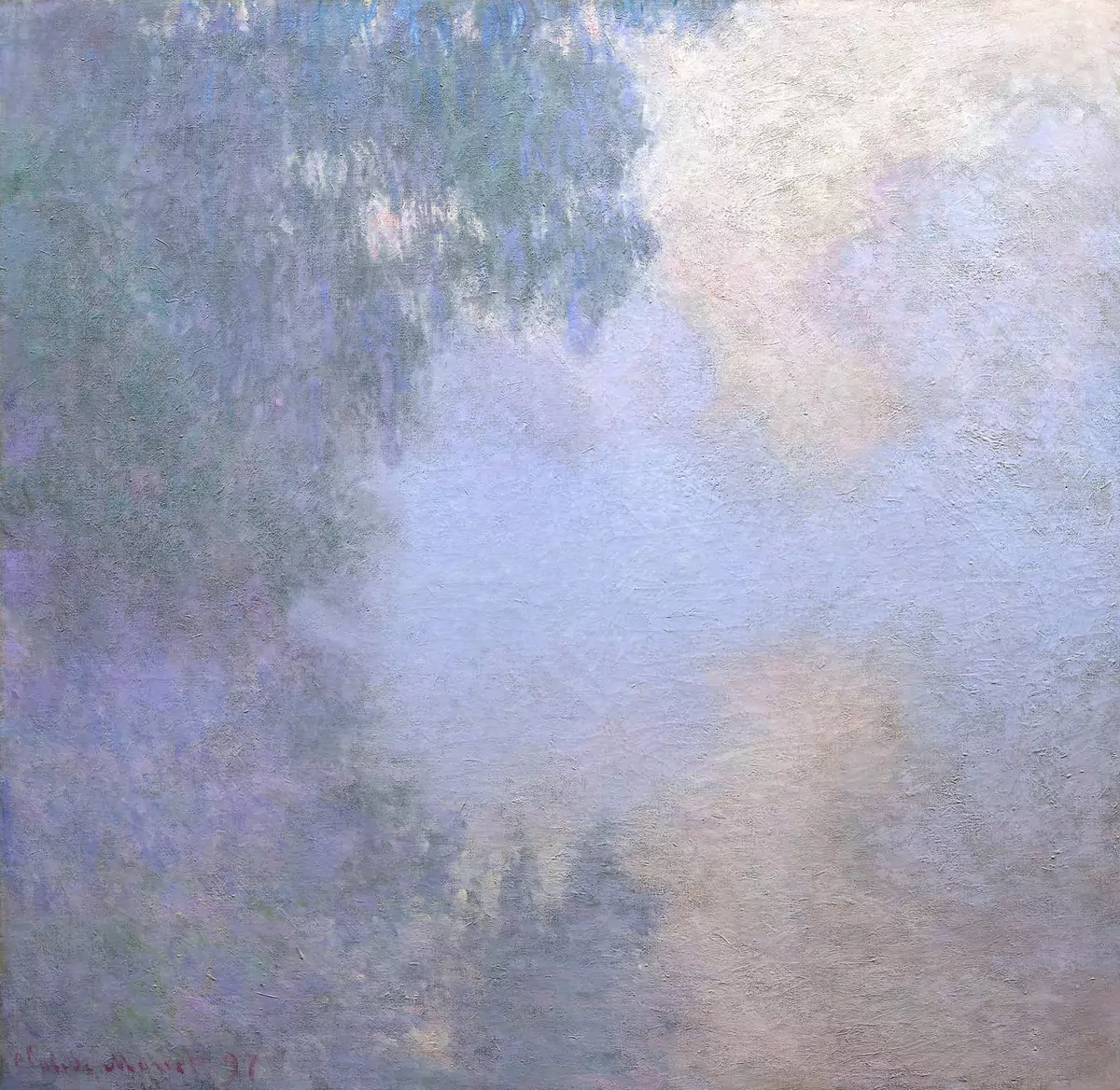Looking for a muse? Check no further. Discover the Best of Art, Culture, History & Beyond!

Claude Monet, Branch of the Seine near Giverny (Mist), 1897, The Art Institute of Chicago
- Artist: Claude Monet
- Title: Branch of the Seine near Giverny (Mist)
- Series: Mornings on the Seine
- Year: 1897
- Medium: Oil on canvas
- Dimensions: 89.9 x 92.7 cm
- Location: The Art Institute of Chicago
An Impressionist Meditation on Light and Atmosphere
Claude Monet’s Branch of the Seine near Giverny (Mist) is a mesmerizing exploration of light, water, and reflection. Painted in 1897 as part of his Mornings on the Seine series, this work captures a moment of serene stillness on the river near his home in Giverny. Now housed in The Art Institute of Chicago, the painting exemplifies Monet’s mastery of atmospheric effects and his fascination with the changing qualities of nature.
A Series Devoted to Tranquility
Monet’s Mornings on the Seine series consists of 21 canvases painted at dawn along a secluded bend of the river. These paintings are studies of light, air, and water, revealing subtle variations in tone and texture as morning mist dissolves into daylight. Unlike his more turbulent seascapes or garden scenes, these river paintings offer an intimate, almost meditative atmosphere, inviting viewers to experience the hushed beauty of early morning.
In Branch of the Seine near Giverny (Mist), Monet envelops the canvas in a soft, muted palette dominated by blues, purples, and gentle greens. The overhanging branches frame the river, while their reflections create a dreamlike effect, dissolving the boundary between water and sky. The delicate brushstrokes and blurred edges enhance the sensation of mist floating above the river, a hallmark of Monet’s ability to depict fleeting atmospheric conditions.
Monet was captivated by how water transforms light, and this painting exemplifies his skill in capturing that ephemeral interplay. The surface of the Seine acts as both a mirror and a dynamic entity, reflecting trees and sky while gently distorting them. The diffused morning light softens the entire scene, lending it an ethereal, almost otherworldly quality.
A Shift Toward Abstraction
By the late 19th century, Monet’s brushwork had become increasingly free, emphasizing mood over precise detail. Branch of the Seine near Giverny (Mist) hints at his later Water Lilies series, where forms dissolve into pure color and movement. The painting is less about a literal depiction of the landscape and more about evoking an experience—a fleeting moment suspended in time.
This painting, like the rest of the Mornings on the Seine series, underscores Monet’s lifelong devotion to capturing nature’s transient beauty. His ability to distill light, color, and atmosphere into a harmonious whole influenced not only his Impressionist contemporaries but also later movements such as Abstract Expressionism.
Branch of the Seine near Giverny (Mist) remains a testament to Monet’s genius in rendering the intangible—light, air, and reflection—with masterful simplicity. In its soft hues and quiet composition, the painting invites viewers to pause, observe, and lose themselves in its dreamlike stillness, much as Monet himself did over a century ago.

This article is published on ArtAddict Galleria, where we explore the intersections of art, history, and culture. Stay tuned for more insights and discoveries!